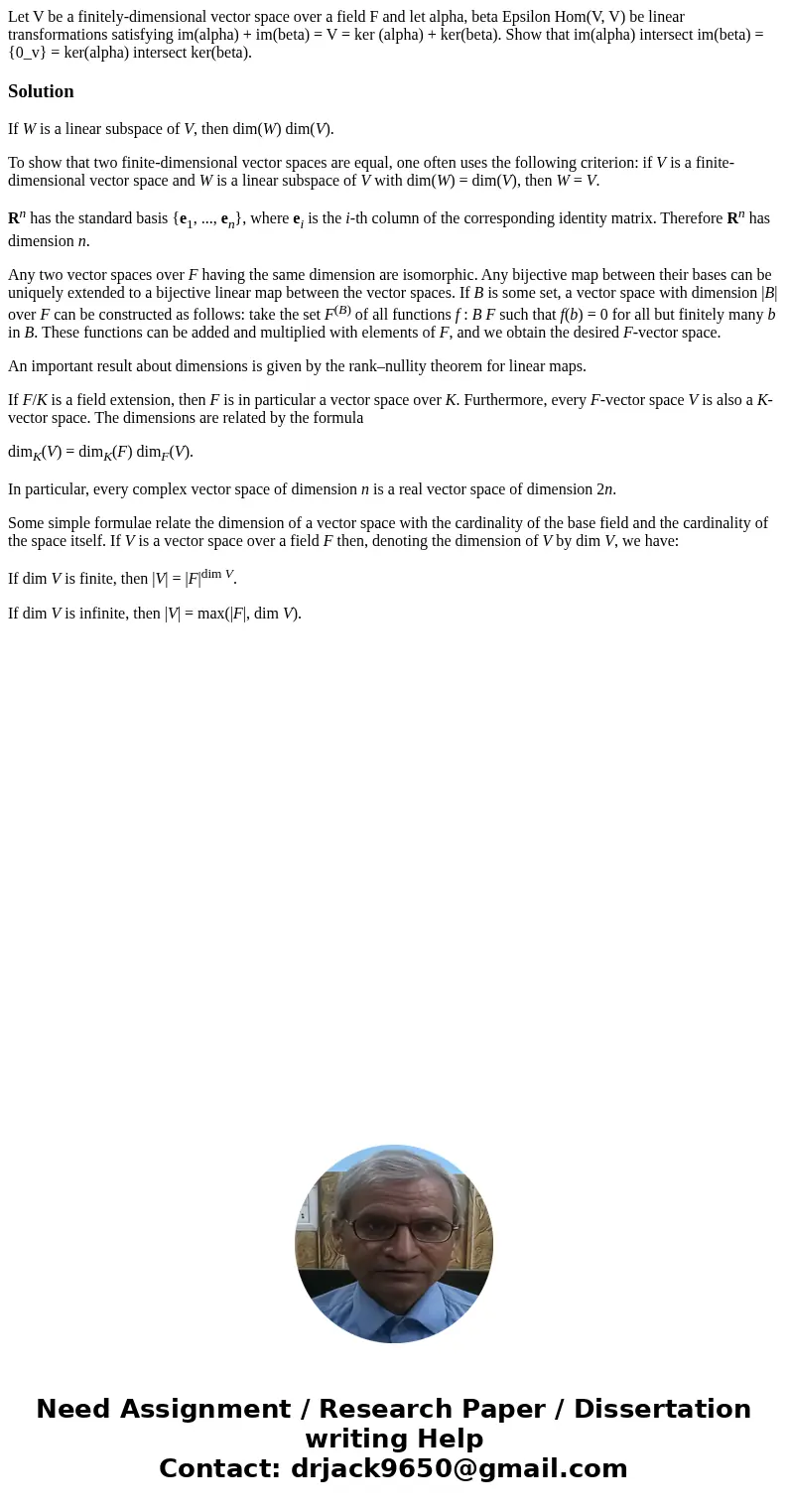Let V be a finitelydimensional vector space over a field F a
Solution
If W is a linear subspace of V, then dim(W) dim(V).
To show that two finite-dimensional vector spaces are equal, one often uses the following criterion: if V is a finite-dimensional vector space and W is a linear subspace of V with dim(W) = dim(V), then W = V.
Rn has the standard basis {e1, ..., en}, where ei is the i-th column of the corresponding identity matrix. Therefore Rn has dimension n.
Any two vector spaces over F having the same dimension are isomorphic. Any bijective map between their bases can be uniquely extended to a bijective linear map between the vector spaces. If B is some set, a vector space with dimension |B| over F can be constructed as follows: take the set F(B) of all functions f : B F such that f(b) = 0 for all but finitely many b in B. These functions can be added and multiplied with elements of F, and we obtain the desired F-vector space.
An important result about dimensions is given by the rank–nullity theorem for linear maps.
If F/K is a field extension, then F is in particular a vector space over K. Furthermore, every F-vector space V is also a K-vector space. The dimensions are related by the formula
dimK(V) = dimK(F) dimF(V).
In particular, every complex vector space of dimension n is a real vector space of dimension 2n.
Some simple formulae relate the dimension of a vector space with the cardinality of the base field and the cardinality of the space itself. If V is a vector space over a field F then, denoting the dimension of V by dim V, we have:
If dim V is finite, then |V| = |F|dim V.
If dim V is infinite, then |V| = max(|F|, dim V).

 Homework Sourse
Homework Sourse